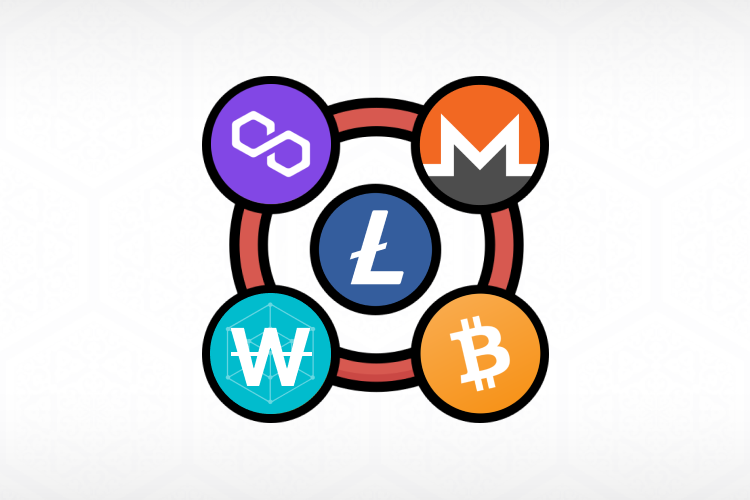
As 2024 comes near, against this fascinating background of cryptocurrencies, everyone's eyes in the financial community are looking toward it. Looking back over 2023, full of ups and downs (with the Binance scandal a seminal event for sure), plus other historic milestones, predictions about next year seem to offer hope and hesitation.
In our look into the future of cryptocurrencies in 2024, we must recognize their expanding influence beyond ordinary financial institutions. Now, these digital currencies are more than just novel oddities.
They've become major powers in such far-flung realms as the entertainment industry and the implementation of governmental structures.
Also, cryptocurrency has started to be used in several sectors. For example, since a few years ago, they can be used as payment methods in entertainment, such as casinos. The bonuses that can be seen on the new Bonuses.com site have the benefits of their cryptocurrency payment. No matter which one you choose, whether a no-deposit bonus or a welcome bonus, just by registering and choosing the bonus that best suits your budget, you can choose the cryptocurrency between credit cards or prepaid cards. Another example goes much further, El Salvador has officialized the currency in the country. This is an important milestone in adoption by nations as a whole. It broadly impacts the overall image of cryptocurrencies and establishes some guidelines for future global implementations.

The Bitcoin halving, set for April next year (2024), is one of the most eagerly anticipated aspects since 2016. The halving of miners 'rewards is an event that has historically catalyzed price rises. And according to experts like those at Bitwise Investments, Bitcoin might hit new heights in 2024, passing the $80K mark.
Security will continue to be an important focus. Consensus mechanisms become increasingly robust and resistant to 51 % of attacks, while new ways of keeping users 'digital assets safe are still being explored.
Privacy will also improve as new privacy solutions such as zk-rollups appear, which make it possible to do transactions privately while maintaining the basic transparency of blockchains.
More companies and investment funds will add crypto assets to their portfolios, driving institutional adoption further. Such an influx of institutional capital might make the market feel better, giving it greater respectability and stability.
This year, new crypto-oriented financial products tailored for institutions such as pensions and insurance will be developed and launched. More regulated channels with better safeguards against theft exist to participate in the risky world of cryptocurrency trading.
Well-defined regulatory changes would engender greater confidence in the market, drawing new investors and businesses. However, restrictive regulations would present obstacles and create volatility.
Crypto companies will adjust their operations to meet changing regulations, strengthening KYC/AML compliance rules and making full disclosure to win back consumers 'trust.
Hence, greater regulatory compliance will give the crypto field more credibility and a healthier environment for investors, whether old or new economy types.
And the performance of altcoins and DeFi projects will be crucial. Others will be taken out as serious competitors with new features that threaten Bitcoin and Ethereum's dominance. Yet, some may only serve to complement existing functions.
Inter Blockchain interoperability might become more important, making sharing information between crypto projects or systems easier and less time-consuming.
Cryptocurrencies will remain a factor in financial inclusion, particularly towards the outskirts. Financial services can be offered even without traditional banking facilities or infrastructure development.
Cross-border remittances using cryptocurrencies, which can be faster and cheaper than traditional means, will become more prominent.
Artists, athletes, and creators will seek out new methods of participation in the digital economy by tokenizing unique assets such as sports moments or artworks. These options give rise to a more diversified market for NFTs than ever before.
As NFT technology develops, new business models will emerge through which decentralized communities and markets can be effectively built to provide income for creators and participants.
In addition, introducing new instruments and financial products could dim market volatility or become a popular investment choice; in other words, investors can protect their fortunes.
Another big factor is the green aspect, with cryptocurrency projects incorporating measures to make mining more energy-efficient and reduce its carbon footprint. Furthermore, the crypto industry will do its best to raise environmental awareness and show how blockchain technology can be synergistic with long-term sustainability.
Tokenizing of traditional assets, such as real estate and stocks, will come needlessly to the forefront in 2024. Not only does this provide new investment opportunities for investors worldwide, but it's worth mentioning that increasing liquidity leads to better price discovery throughout all financial markets.
Many people in the crypto community have positive expectations about this kind of future. However, attention must be paid to prudence and research as basic conditions for investment decisions. Next year should be another interesting period in the development of cryptocurrencies, and one can only guess how things will turn out.
Thus, 2024 has become an important year for cryptocurrencies. With Bitcoin halving, the possible opening of doors to ETFs and other unexpected events that could change market dynamics in the next two years are bound to be braced with anticipation! Staying alert and watching how this fascinating new era for cryptocurrencies plays out.














